Based on an all-new alloy hull, Southern Pacific’s Cormorant 550 was conceived as a versatile all-rounder, to cater for the recreational as well as the tender market. Not only does it look the part, but it also performs even better than the previous GRP hull based model and is better finished.
When Kiwi Yachting brought the Southern Pacific business about three years ago, one of the initial considerations was to look at the hulls being used, especially the models over 5m. While nearly all were fibreglass, the new owners wanted something more rugged, lighter and suitable for the Kiwi owner.
“Obviously aluminium was the answer, so we set about having new hulls designed that specifically suited each model”, says Tristan Campbell, Marketing Manager for Kiwi Yachting.
The design by Dibley Marine Group follows a brief from Kiwi Yachting for durability, weight reduction, and a dry and stable ride with stability at rest. Dibley had done work on Southern Pacific’s previous models hence the natural connection.
“The 550 had to be light, dry and stable for variable NZ coast conditions and the ride had to be smooth and manoeuvre easily at speed with no vices”, says Dibley.
The result was the 550 and though the design is under the Dibley Design name, it was a true team effort from everyone at Kiwi Yachting and Southern Pacific who all had input into the brief and final result.

“As a designer, it was one of those fun projects where the client knew what they wanted and I was easily able to implement their wishes into an actual model,” adds Dibley.
Southern Pacific wanted a versatile, go anywhere boat in the 5m-6m range. The result is the Cormorant Series, which the Cormorant 550 is the mid size of three models. Only real difference is the size, 5m (Cormorant 500), 5.5m (Cormorant 550) and 6m (Cormorant 600). The Cormorant series are all designed to be multi-purpose and suitable for diving, fishing, water-skiing, or as a yacht tender.
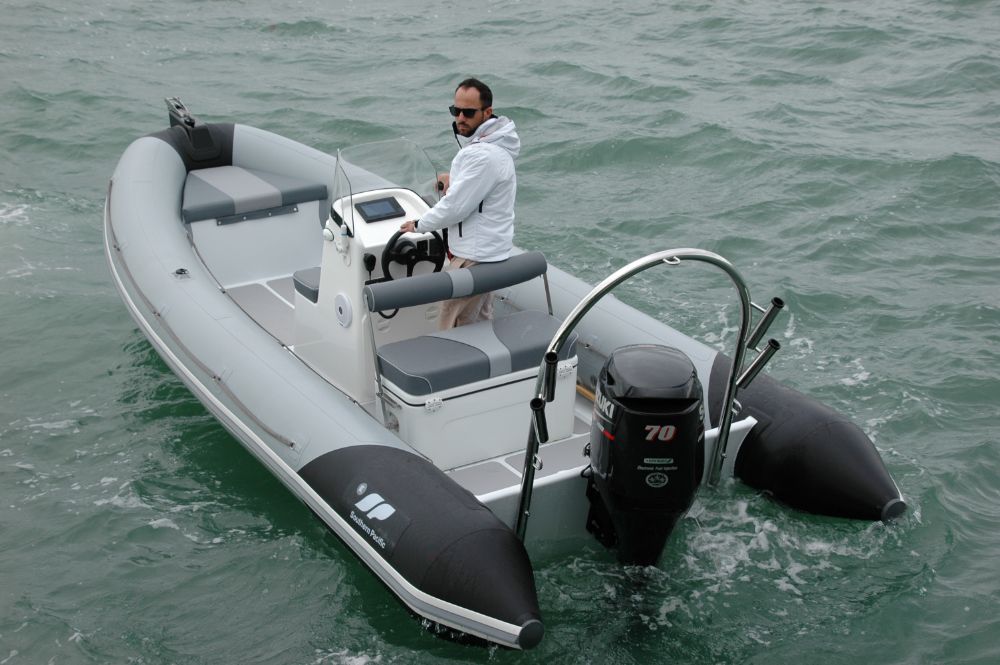
Built Tough
The 22-deg deadrise alloy plate is 4mm (except the 6mm transom) and computer cut for production. The 80-litre alloy fuel tank in the centreline bilge is constructed of one 3mm plate that is rolled with the top and ends added separately. Two baffles are used to divide the fuel tank into four sections.
The thermally welded Valmex PVC tubes, which are glued to the alloy hull, are all cut digitally from a CAD machine so the accuracy is 100%. “When we took over the company everything was cut by hand, which is not only time consuming but also leads to inaccuracies. Going with the CAD system means every boat is the same with finite tolerances that ensure perfection on every panel”, says Tristan.
Colour options in the Valmex are grey in a three different tones, but if you go for the Hypalon option, you can have just about any colour you like.
The Cormorant 550 tubes almost look like they came out of a mould, they are that good! A unique feature on the 550 is the double laminate rear black panels that offer extra durability in the high usage aft areas. It’s where you might attach a Dixon wrap-around ladder. Southern Pacific offer the option of taking the double laminate further forward on the top of the tubes if you want a more durable surface.
The tubes are constructed with five chambers and the width tapers from 0.43m forward to 0.5m aft. This is a very buoyant and stable boat and ideal for divers. Tristan is quick to point out that the tubes on the 550 are more than just fenders and specifically designed for stability at rest and acting as buoyancy when cornering.

Power Options
Southern Pacific rates the Cormorant 550 to 90hp, with 70hp being the recommended option. Top speed on a reasonably calm but wind swept Auckland Harbour was 32 knots (25.4 mph). Being such a light boat, even with two crew and a full tank of gas, the Cormorant 550 is quick to plane and reaches maximum rpm rapidly. It’s a fun boat to drive and relatively dry. Well as dry as a centre console RIB can be when it’s wet and windy.
The boat tracks predictably and doesn’t seem to have any unexpected traits.
The 70hp Suzuki returned a very low fuel consumption of 21.3 lph at 5000 rpm and when I dropped that back to 4000 rpm @ 20 knots, the fuel gauge dipped to less than 10.0 lph. Based on 90% usage of the underfloor 80-litre fuel capacity, that gives a 140nm range. More than enough for a day’s boating I would have thought.
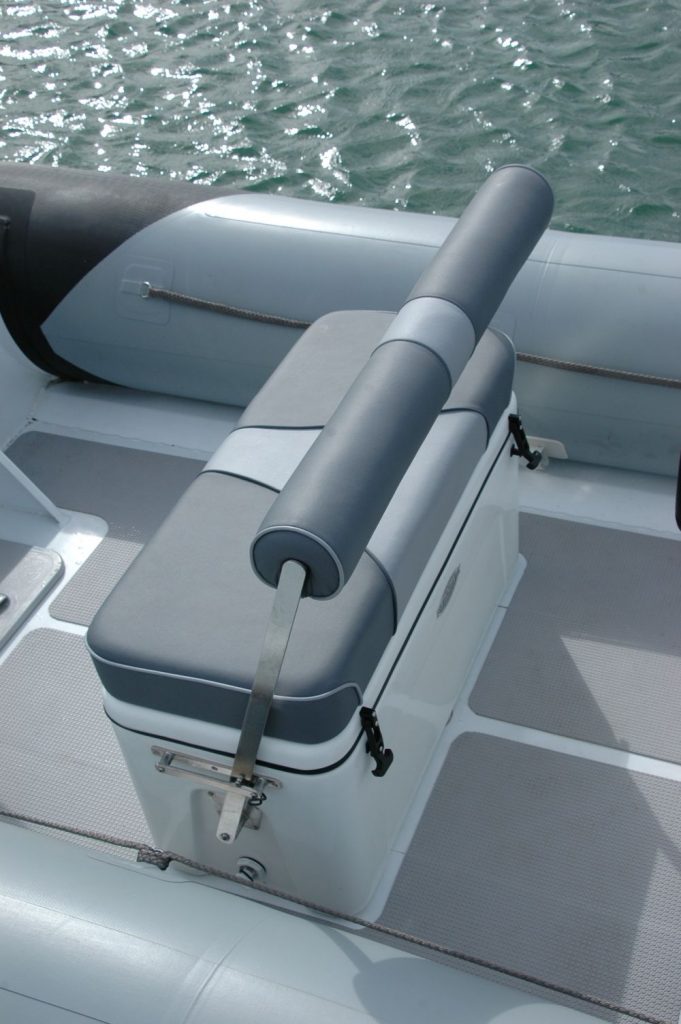
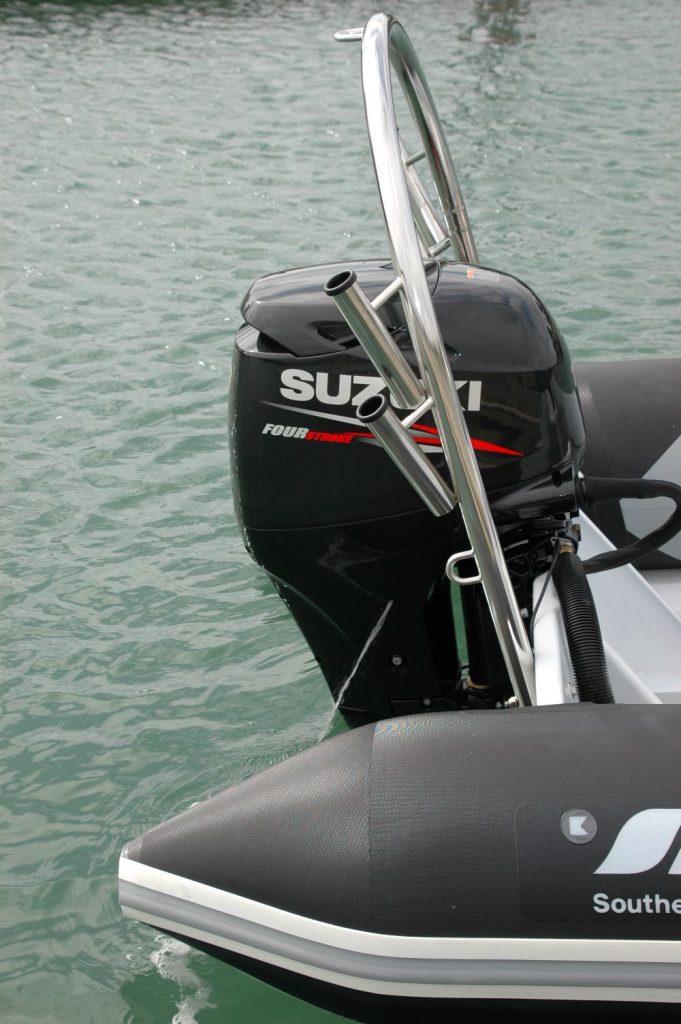
Plenty of Space
One of the first things I noticed about the new Cormorant 550 was the extra internal beam over the previous models. At 1.3m from tube to tube there is plenty of space for your diving and fishing gear and it’s an easy walk around the centre console. Overall beam is 2.3m and the internal length is a generous 3.7m.
While there are no separate storage compartments under the fully welded floor as all spaces are used for buoyancy, there is plenty in the console and under the helm seat. Forward, a separate locker is used to stow the anchor tackle, with a So Pac hatch and removable top cushion. The anchor tackle comes over the tubes in a large stainless roller so you are not rubbing the warp and chain over the fabric surface. The cleat drops into a very versatile Railblaza Ribport connection, which can be used to mount a rod holder, bait board or even a drink holder.
The fibreglass centre console features a padded forward seat and loads of storage space inside. This is accessed from a large So Pac hatch at the rear and also houses the batteries. The flat dash is large enough for up to 10” MFDs, which on our test boat was a Garmin GPSMap 7407XS. Other options included a Fusion MSRA205 stereo and ICOM ICM 304VHF.
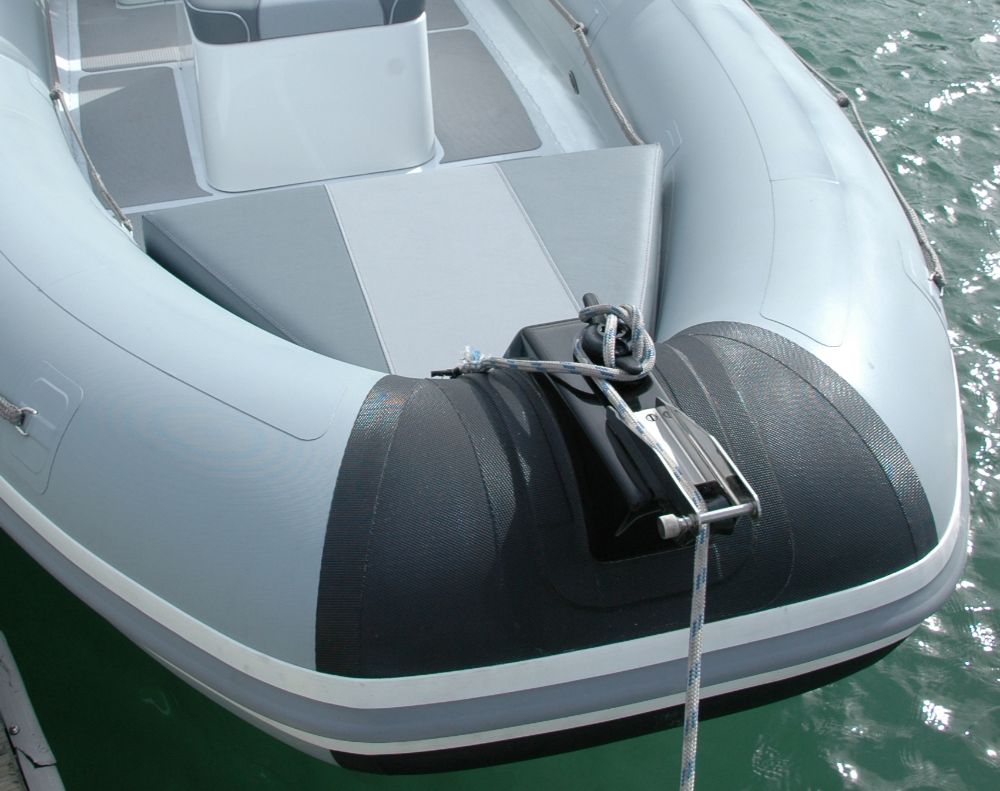
If this were my boat, I would add a teak rail –about 30mm high – across the rear of the dash so that the space could be utilised as a shelf for small items such as keys, sunnies, or a cell phone.
Tristan pointed out that there are a variety of console options, including what they call their super yacht console that is a lot higher. You can also have a basic jockey console and even a side console if that suits your needs. Bimini tops are also available.
The helm seat is a 56-litre Icetek bin with padded top and reversible backrest with soft foam vinyl covered roll. This is bolted to the floor but is still removable.
Behind the seat, there is enough room for a couple to fish, but if you have a third person, then I would suggest they go forward. Rod holders are provided on the arched transom rail, which also doubles as the ski tow mount and somewhere to attach a custom bait board. There are also addition rod holders available on more Ribports around the hull.
Taking it to the Next Level
The Cormorant 550 is proving popular in all the markets that Southern Pacific has targeted. Tristan says that they have sold a considerable number of them to people with holiday homes, who want a boat that is straightforward and easy to launch off the beach or local ramp and is suitable for a myriad of uses. They are light, economical to run and easy to stow.
“While Southern Pacific has always had great brand equity, our aim has been to set the bar that much higher and I think we have achieved that now with boats like the Cormorant Series”, say Tristan.
After spending some time aboard the 550, I would find that hard to argue with.
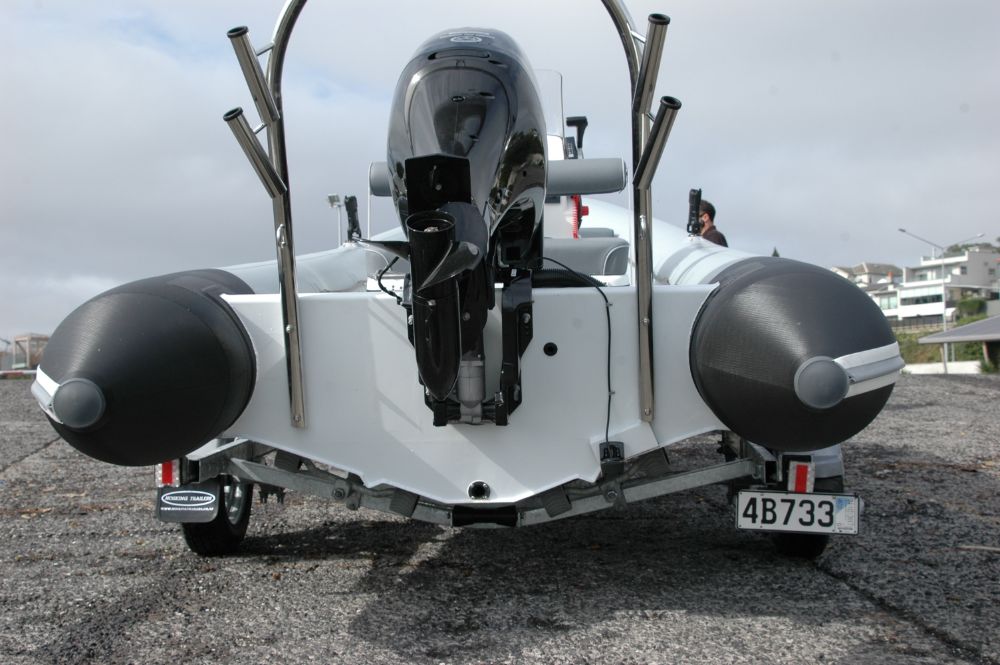
Specifications
- Model: Southern Pacific Cormorant 550
- Priced from: $NZ52,000
- Type: Centre Console RIB
- Construction: 4mm alloy / Valmex PVC
- LOA: 5.5m
- Beam: 2.3m (external)
- Beam: 1.3m (internal)
- Deadrise: 22 deg
- Hght On Trailer: ??
- Trailerable Weight: ??
- Test Power: Suzuki 70 4S
- Propeller: ??
- Power Options: 70-90hp
- Fuel Capacity: 80 litres
FUEL & PERFORMANCE DATA |
| |||
Southern Pacific Cormorant 550/ Suzuki 70 4S |
| |||
Fuel capacity: | 80 | litres |
| |
RPM | KNOTS | L / h | Range (NM) |
|
1000 | 3.0 | 1.4 | 150 |
|
1500 | 4.5 | 2.2 | 140 |
|
2000 | 5.5 | 2.6 | 150 |
|
2500 | 8.0 | 4.6 | 120 |
|
3000 | 11.5 | 5.8 | 140 |
|
3500 | 16.0 | 7.7 | 140 |
|
4000 | 20.0 | 9.7 | 140 |
|
4500 | 23.5 | 13.1 | 120 |
|
5000 | 27.0 | 21.3 | 91 |
|
5400 | 32.0 | 24.9 | 92 |
|
Knots are rounded off to nearest .5 and range is based on 90% of tankage.




